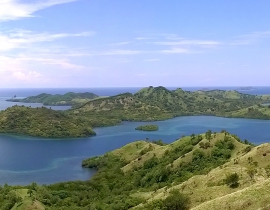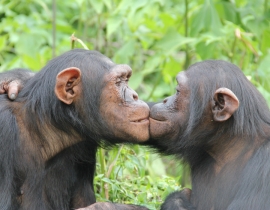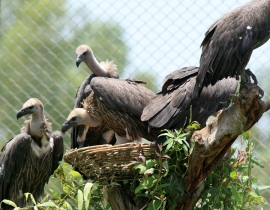Posted May 3, 2017 in All
Komodo dragon populations are restricted to five islands in south-eastern Indonesia. Four island populations occur within the world heritage listed Komodo National Park (KNP,) with less than 3,000 individuals on a land area of about 600 km2.
On Flores, outside of the KNP boundaries, Komodo dragons are protected on four nature reserves located on the western and northern coast of the island. Here, conservation efforts are conducted by the NGO Komodo Survival Program, and continued support from members and associates of the European Association of Zoos and Aquaria, including Colchester Zoo and Action for the Wild. The conservation project is implemented in the Wae Wuul nature reserve, off the eastern boundaries of Komodo National Park in western Flores. The northern coast of Flores constitutes the easternmost known stronghold of Komodo dragons in Indonesia and harbours a genetically diverse lizard population in a region still void of mass tourism.
A number of important conservation initiatives have been carried out since the project began including:
- The sentry post in the Wae Wuul reserve was completely restored and a similar initiative is being planned for the northern Flores reserves.
- A wildlife monitoring programme gives annual figures of both Komodo dragon and main prey species population trends and provides continued and diversified training to rangers and technical staff of the Indonesian Department of Forestry.
- Threats to the reserves have been gradually, but significantly, reduced thanks to an integrated environmental conservation approach with a strong community education component, particularly in primary schools, and the involvement of local people in the protection of natural habitats and law enforcement policy.
The project is the first and only to have an official agreement with the Indonesian Department of Forestry for conducting monitoring and conservation activities of Komodo dragons in Indonesia.
In 2016, the first session of a three-year comprehensive survey was conducted to assess the current distribution of Komodo dragons on the island of Flores. Presence/absence data of Komodo dragons was assessed by positioning infrared cameras along the entire coastal area of the island. Komodo dragons were caught on camera traps in 23 sites, including a new Komodo dragon island population on Longos Island. None of the previous surveys conducted on Longos Island reported the presence of Komodo dragons. This recent survey successfully captured images of Komodo dragons on 10 cameras out of 23 camera trap locations on the island. This is the first record of a Komodo dragon island population so far unknown to the international community and national authorities.
The Longos Island survey also found 24 mound nests, 15 of which had signs of activity. Active Komodo dragon nests will be confirmed by possibly deploying camera traps from June to October 2017 in order to record digging activity by females and/or female association with the nest. Females guard their nests for approximately the first 2-3 months after laying, remaining in close proximity to the incubation chamber. Continued monitoring could provide valuable data to plan long-term conservation of Komodo dragons on the island.
Action for the Wild first began supporting this conservation project in 2006 and has since donated over £9,200 to help this important work. We look forward to continuing our efforts into the future to help research and conserve this population.



